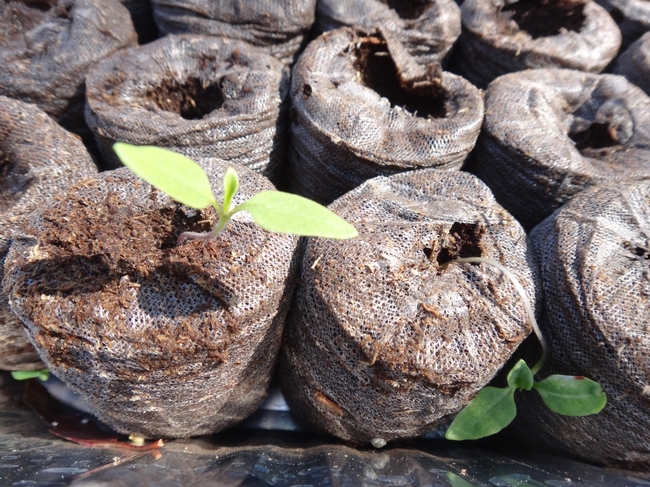
It's beginning to look a lot like spring, so many small growers try to save some money by starting seeds in growing systems and then plant the transplants to get a jump on weeds and other pests like slugs that can decimate a direct-seeded crop. But even the best ideas can sometimes not go as planned.
There are two main pathogens, Pythium and Rhizoctonia, that are the cause of damping-off disease but there are others such as Fusarium and Phytophthora. This disease occurs in newly emerged seedlings, or even as the seeds are just starting to germinate. Damping off is the cause of many seedling losses. It is most notable soon after the seedling emerges. The seedling will seem fine one day and the next it has flopped over at the base and then it dies. We see it a lot this time of year because it is most prevalent in cool and wet conditions.
Damping off is not the same as root rot. Damping off affects the young, succulent stem of the seedlings at or slightly below the soil or media surface while root rot affects the roots. We generally don't see root rot unless the drainage is bad.
There is no cure for damping off but it can be prevented. The best thing to do is avoid keeping the media very wet and if possible, start the plants in a warm location such as a greenhouse. It is better to mist the media and plants lightly several times a day than water heavily. Misters can be set to go off using timers or one can hand water using “fogger” nozzles. Do not reuse soil or pots that had plants that died unless sterilized because they now carry the pathogen.
As plants get past the seedling stage, they are no longer susceptible to damping off but if the soil is still kept wet, root and stem rot can occur.
UC IPM has developed a Pest Note covering damping off and it can be found at http://ipm.ucanr.edu/PMG/PESTNOTES/pn74132.html